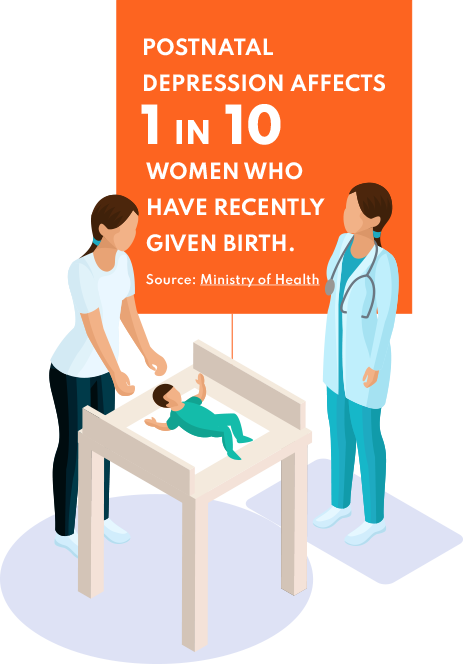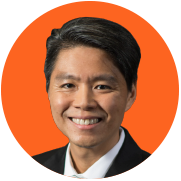PAYING IT FORWARD
Uplifting lives across generations
. can prosper
 mother, exhausted and overwhelmed by the demands of caring for her newborn. A child, denied of opportunities due to his or her socio-economic circumstances. An elderly person, struggling with physical and mental limitations due to old age. The odds are that we probably know or have heard about someone in such a situation.
mother, exhausted and overwhelmed by the demands of caring for her newborn. A child, denied of opportunities due to his or her socio-economic circumstances. An elderly person, struggling with physical and mental limitations due to old age. The odds are that we probably know or have heard about someone in such a situation.
Striving for the advancement of communities across generations is part of Temasek’s charter to be a trusted steward — to support community programmes that focus on connecting people, uplifting communities, protecting the planet and advancing capabilities.
Since 2003, Temasek has set aside a portion of its returns above the risk-adjusted cost of capital for community gifts. These philanthropic gifts are channelled to the non-profit Temasek Foundation and other similar entities, which use the funds to develop and deliver impactful programmes that benefit people in Singapore, Asia and beyond.
Temasek Foundation sponsors a diverse range of programmes to strengthen social resilience within Singapore, foster international exchanges and regional capabilities, and advance science and nature globally. Its programmes are broad and deep in reach, from education and healthcare to community building and research, and from public-service capabilities to sustainability initiatives. Through close cooperation with like-minded partners in each of these areas, Temasek Foundation creates positive outcomes for individuals and communities, now and for generations to come.
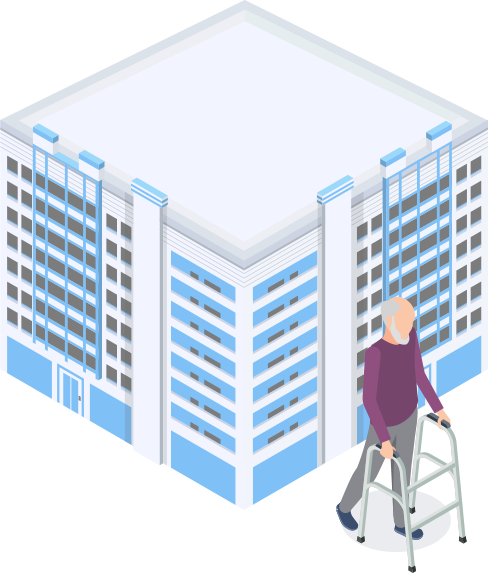
TAKE A QUIZ
years
years
years
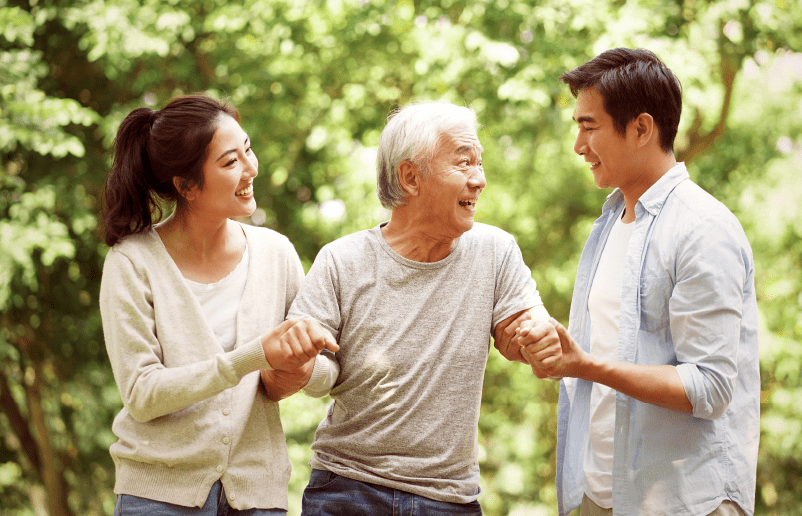
IMPACTING FUTURES
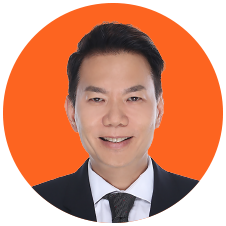
MR SHAUN SEOW

“It is in Temasek’s DNA to take an active stake in
community well-being and exercise good stewardship
through our contributions.”
“It is in Temasek’s DNA to take an active stake in community well-being and exercise good stewardship through our contributions.”
— MR SHAUN SEOW
ON THE MOVE
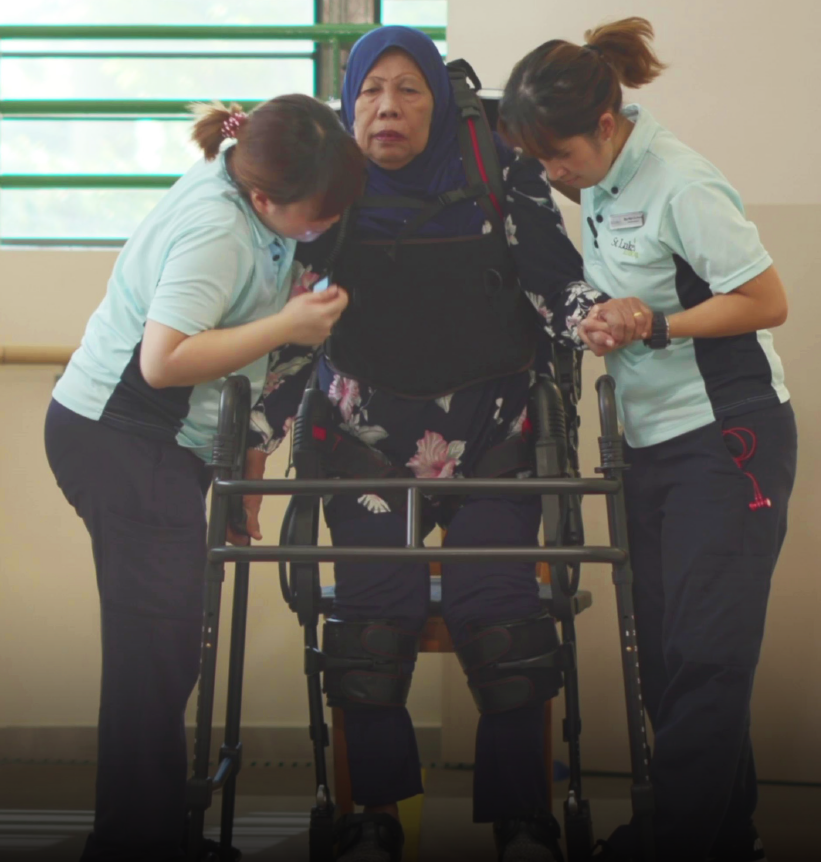
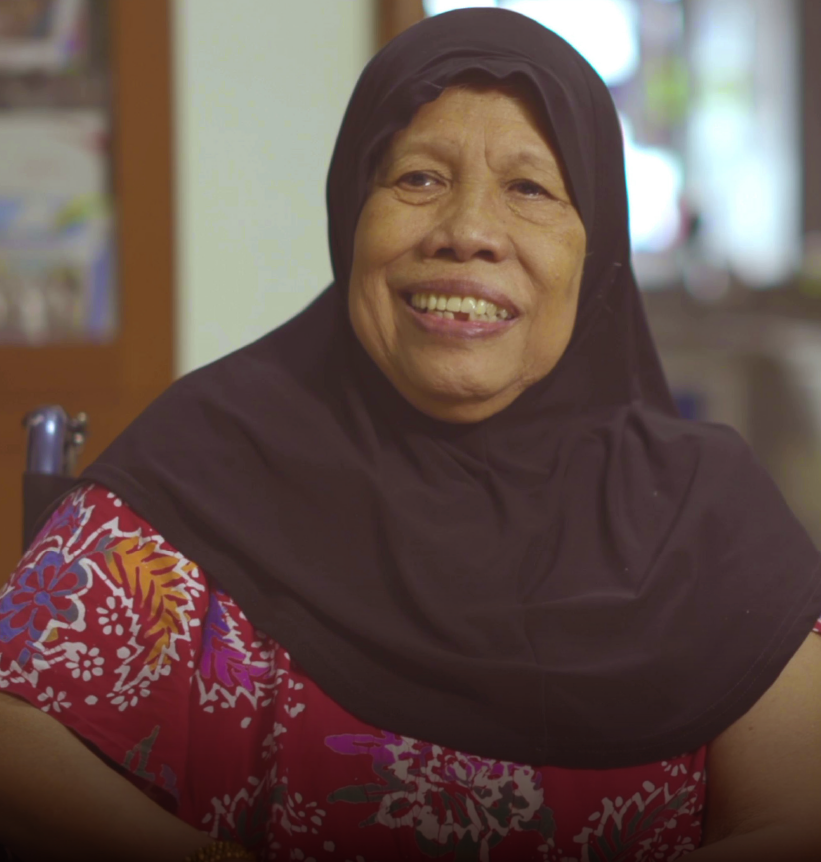


ON THE MOVE
“I want to be strong, like last time. I don’t want to lie down. I want to go outside,” said Mdm Salmiah bte Hadir, after suffering a stroke in 2018 at the age of 68. The medical condition affected the left side of her body, leaving her wheelchair-bound and reliant on help just to get around her three-room flat.
Mdm Salmiah is not alone. According to the Singapore Stroke Registry, the number of stroke episodes increased from 5,890 in 2010 to 8,849 in 2019. Cardiovascular diseases (including stroke) also accounted for 14 per cent of total disability-adjusted life years in 2019, making it one of the top causes of years of healthy life lost among Singaporeans. These figures will surely rise in the coming years, in tandem with our rapidly ageing population, which amplifies the need for stroke prevention and treatment measures.
Fortunately, on the treatment side, a new intervention — bionic exoskeletons — appears to be improving options and outcomes for stroke patients. This technology is the focus of the Improving Mobility via Exoskeletons (iMOVE) programme, conducted by the National University Health System (NUHS) with support from Temasek Foundation and local charity Trailblazer Foundation. Launched in 2019, iMOVE is Asia’s largest clinical study to examine the effectiveness of bionic exoskeletons in physical rehabilitation to aid patients with impaired mobility, across a range of rehabilitation settings, from tertiary hospitals to community-based day rehabilitation centres.
INTRODUCING
THE BIONIC
EXOSKELETON
Out of those 317 patients, more than three-quarters had completed all 12 sessions by the end of March. As patients — especially older patients who tend to not tolerate training or have a fear of technology — often fail to adhere to conventional rehabilitation programmes after hospital discharge, that in itself was a “significant outcome”, said Dr Effie Chew, Head of Rehabilitation Medicine at Alexandra Hospital, one of the five sites.
Significant improvements in mobility were observed among all patient groups. “Almost 9 in 10 stroke survivors who had acquired their disability less than three months before starting on the programme made clinically substantial improvements in mobility. Even for those with chronic stroke, 44 per cent were still able to achieve clinically substantial gains in mobility,” said Dr Chew. More than half of the patients improved their walking speed and aerobic capacity after just 12 sessions, while physiotherapists also noted that the technology helped them achieve rehabilitation goals with patients more effectively.
Take Mdm Salmiah, who took part in the study. Although she was initially intimidated by the exoskeleton’s many straps and components, it did not take her long to get accustomed to the device. “The first time I was scared … but they tell me cannot jatuh [fall]. Then the second time, I knew how to balance already,” she recalled. With the help of the exoskeleton, she was soon able to stand on her own and her walking ability improved.
Based on these encouraging results, NUHS is continuing the iMOVE programme. Rehabilitation with exoskeleton training will remain available to patients at the five sites, and a sixth site has recently opened at Jurong Community Hospital. NUHS hopes to further expand its community partnerships so that more people with impaired mobility can speed up their recovery and reintegrate meaningfully into the community.
“We are excited to have played a part in pioneering the use of this revolutionary technology to uplift the lives of vulnerable individuals in Singapore. With regained or greater mobility, seniors will be able to retain their independence and reduce or avert social isolation,” said Ms Woon Saet Nyoon, Head of Community Networks and Partnerships at Temasek Foundation. “While iMOVE was targeted at seniors, the study has also demonstrated that the benefits of rehabilitation using exoskeletons can be extended to other groups, such as younger adults and children with spinal cord injury.”
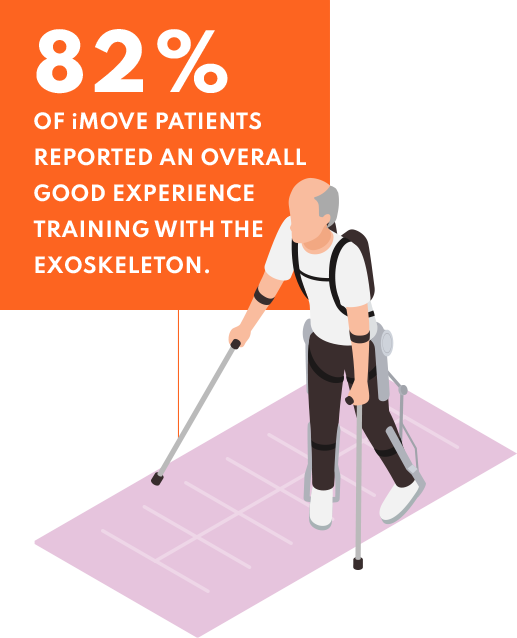
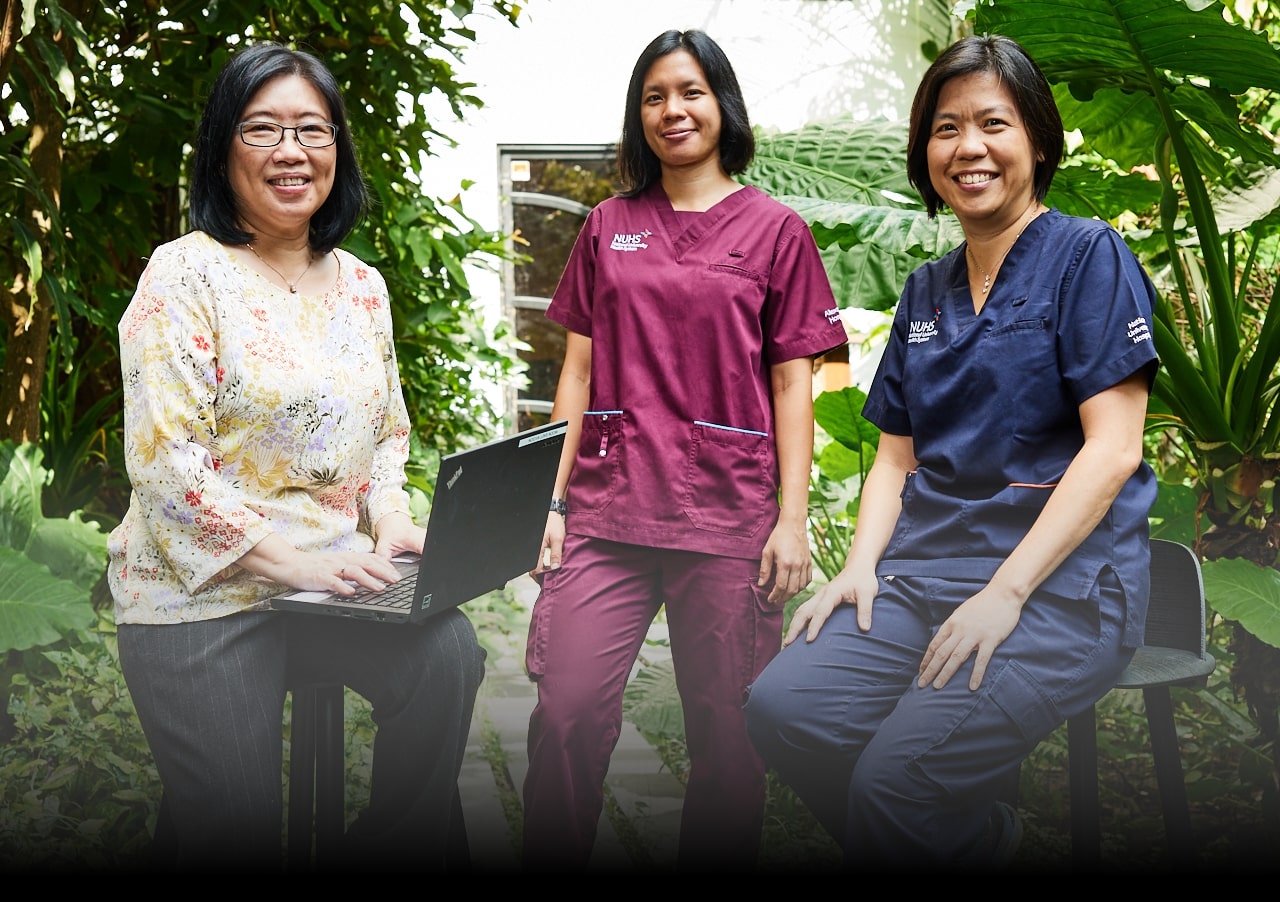
Out of those 317 patients, more than three-quarters had completed all 12 sessions by the end of March. As patients — especially older patients who tend to not tolerate training or have a fear of technology — often fail to adhere to conventional rehabilitation programmes after hospital discharge, that in itself was a “significant outcome”, said Dr Effie Chew, Head of Rehabilitation Medicine at Alexandra Hospital, one of the five sites.
Significant improvement in mobility was observed among all patient groups. “Almost 9 in 10 stroke survivors who had acquired their disability less than three months before starting on the programme made clinically substantial improvements in mobility. Even for those with chronic stroke, 44 per cent were still able to achieve clinically substantial gains in mobility,” said Dr Chew. More than half of the patients improved their walking speed and aerobic capacity after just 12 sessions, while physiotherapists also noted that the technology helped them achieve rehabilitation goals with patients more effectively.
Take Mdm Salmiah, who took part in the study. Although she was initially intimidated by the exoskeleton’s many straps and components, it did not take her long to get accustomed to the device. “The first time I was scared … but they tell me cannot jatuh [fall]. Then the second time, I knew how to balance already,” she recalled. With the help of the exoskeleton, she was soon able to stand on her own and her walking ability improved.
Based on these encouraging results, NUHS is continuing the iMOVE programme. Rehabilitation with exoskeleton training will remain available to patients at the five sites, and a sixth site has recently opened at Jurong Community Hospital. NUHS hopes to further expand its community partnerships so that more people with impaired mobility can speed up their recovery and reintegrate meaningfully into the community.
“We are excited to have played a part in pioneering the use of this revolutionary technology to uplift the lives of vulnerable individuals in Singapore. With regained or greater mobility, seniors will be able to retain their independence and reduce or avert social isolation,” said Ms Woon Saet Nyoon, Head of Community Networks and Partnerships at Temasek Foundation. “While iMOVE was targeted at seniors, the study has also demonstrated that the benefits of rehabilitation using exoskeletons can be extended to other groups, such as younger adults and children with spinal cord injury.”

. THE HUMAN
BRAIN
BUILDING BONDS
Volumes of research show how critical the first few years of life are on brain development. What a child experiences during this period will have a lasting impact on their learning ability, behaviour, health and well-being. Babies who have loving and nurturing relationships with the adults in their lives are more likely to grow up to become responsible and well-adjusted adults themselves.
In particular, the relationship between mother and child is paramount. “The mother-child dyad is inseparable in its interdependency on health outcomes and well-being during the early childhood period,” said Associate Professor Chan Yoke Hwee, who chairs the Division of Medicine at KK Women’s and Children’s Hospital (KKH). “To deliver these priorities for child health, an integrated approach focused on building healthy behaviour as well as preventive care through screening and early intervention has to be adopted.”
Assoc Prof Chan leads the Integrated Maternal and Child Wellness Hub, a pilot programme by KKH, SingHealth Polyclinics (SHP) and Temasek Foundation that delivers such integrated care for mothers and children aged four and under. Started in 2019, the Hub is located at Punggol Polyclinic (SHP-Punggol) and is the first community-based setting in Singapore to provide structured, comprehensive screening and holistic care for both mother and child.
A range of services is offered at the Hub to enhance children’s development in the early years. These include enhanced child developmental screening at 18 and 30 months of age, to detect those at risk of developmental delays or disorders (such as autism) and enable early intervention; growth monitoring of children; and nutrition and lactation support. To support mental wellness, mothers are also screened for postnatal depression within three months of giving birth.
THE HUB HAS
BENEFITTED MORE THAN 11,300 MOTHER-CHILD
DYADS TO DATE.
*Info accurate as of Jun 30, 2021.
look over the horizon
Temasek seeds catalytic capital
to make a difference with tomorrow in mind




















